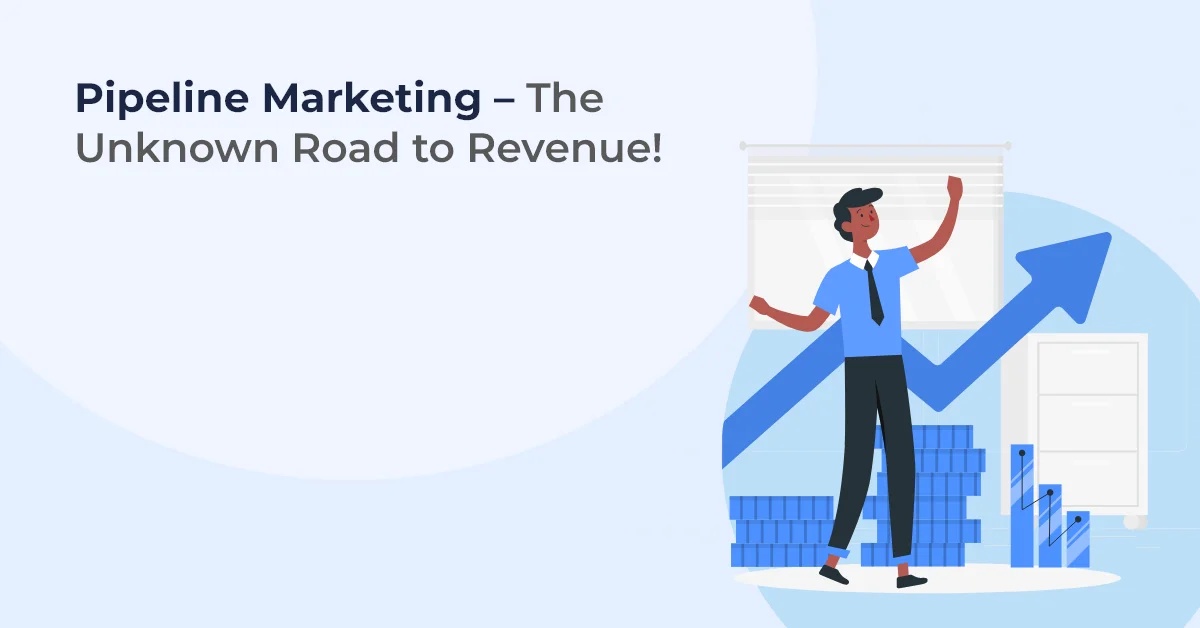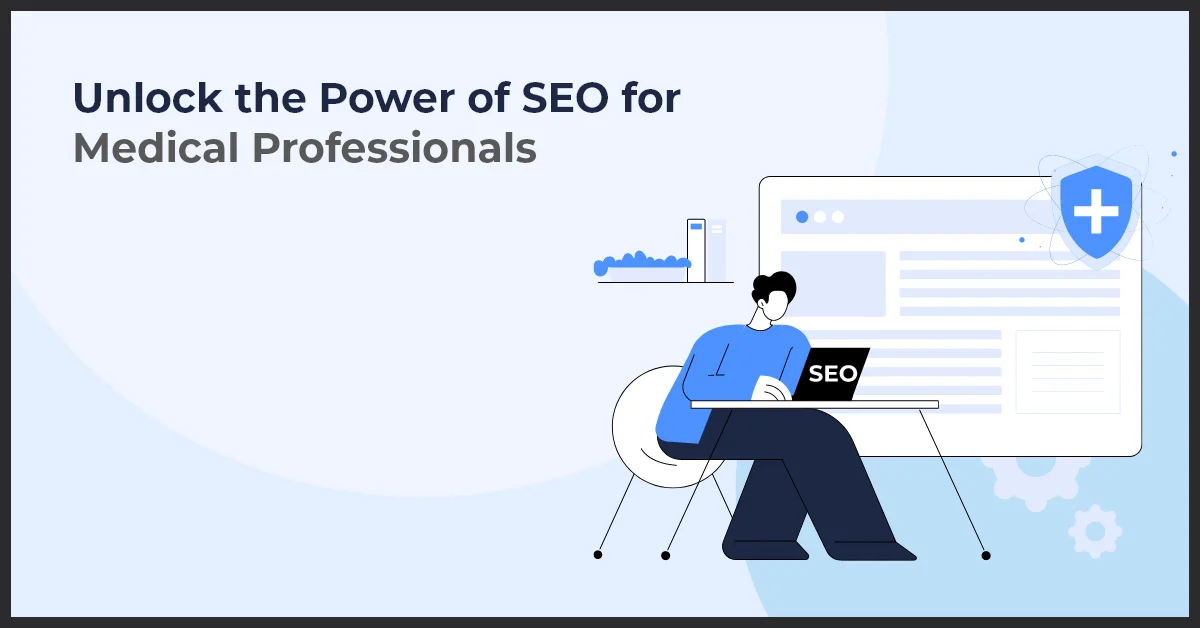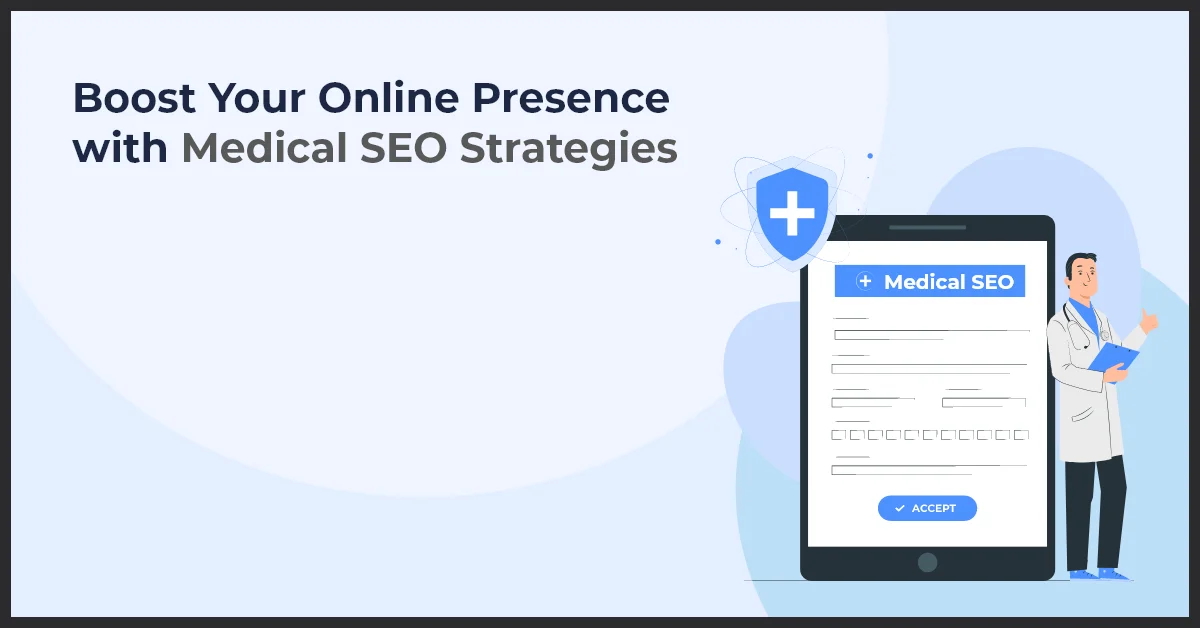Pipeline Marketing: Your Roadmap to Revenue Growth

Published on: October 7, 2021
Updated on: March 11, 2025
2358 Views
- Digital Marketing
20 min read
Imagine a perfect marketing world, where all the leads that you bring in turn into customers. This thought looks good on paper but the reality is far from this truth. Marketers have been doing lead generation for centuries now. About 53% of the marketers allocate half or more of their budget to lead generation, yet 80% claim that their lead generation strategies are only somewhat effective.
The Big Question - WHY?
At every stage of the buyer’s journey, leads drop off making the number of available leads in the next stage even smaller, this is why we call it a funnel.
When we talk about pipeline marketing, the pipeline refers to that bottom area of the funnel where sale opportunities are. Therefore the term pipeline marketing — the idea of continuing marketing efforts where contact becomes an opportunity and not just to marketing qualified lead status.
Bringing in more leads for your business is not going to bring you more customers. And also, they will never meet your growth and revenue goals.
After all, there is one goal that overshadows every other business goal- REVENUE!
How much money did your business make at the end of the day? Unless you plan on screaming “Show me the money” as Jerry Maguire did in the 1996 classic, we recommend you take pipeline marketing into serious consideration!
Understanding the Sales Pipeline
A sales pipeline refers to the systematic approach a company takes to convert leads into customers. It is a visual representation of the customer's journey, from the initial contact to the final transaction. Understanding the sales pipeline is crucial for effective pipeline marketing strategies.
Definition and components of a sales pipeline
A sales pipeline is made up of various components, each playing a critical role in the sales process. These components include:
- Lead generation: This is the process of attracting potential customers and generating interest in your products or services.
- Qualification: Once leads are generated, they need to be qualified to determine if they are a good fit for your business. This step helps prioritize leads and allocate resources effectively.
- Opportunity creation: Once a lead is qualified, it becomes an opportunity. Opportunities are leads that have shown a specific interest in your offering and are likely to convert into customers.
- Nurturing: Nurturing involves building relationships with leads by providing relevant and valuable content. This helps maintain engagement and increases the likelihood of conversion.
- Closing the deal: This is the final stage of the sales pipeline, where the lead becomes a customer by making a purchase.
Pro Tip: Regularly review and optimize each stage of your sales pipeline. Focus on qualifying leads and nurturing relationships to increase engagement and improve conversion rates, resulting in better overall sales performance.
Stages of the sales pipeline and their significance
The sales pipeline is typically divided into several stages, each representing a specific step in the customer's journey. These stages include:
- Prospect: Leads in the prospect stage have shown interest in your products or services but have not yet been qualified as opportunities. This is the starting point of the sales pipeline.
- Qualification: In this stage, leads are evaluated based on their fit and intent. The goal is to determine whether they have the potential to become customers.
- Proposal/Quote: If leads pass the qualification stage, they move on to the proposal or quote stage. Here, specific offers or quotes are presented to the leads based on their needs and preferences.
- Closing: This is the stage where leads make the decision to become customers by finalizing the purchase. It is the ultimate goal of the sales pipeline.
Pro Tip: Clearly define each stage of your sales pipeline to enhance understanding and communication within your team. Regularly analyze progress and adapt strategies to improve conversion rates at each customer journey stage.
How pipeline marketing aligns with the different stages of the sales pipeline
Pipeline marketing is a strategic approach that aligns marketing efforts with the different stages of the sales pipeline. It aims to attract and nurture leads throughout the entire customer journey to increase conversion rates. Pipeline marketing supports the sales pipeline by:
- Lead generation: Implementing various marketing techniques to generate high-quality leads.
- Nurturing: Providing valuable content and maintaining engagement to move leads towards conversion.
- Opportunity creation: Leveraging marketing tactics to identify and prioritize leads with the highest potential for conversion.
- Closing the deal: Implementing marketing strategies that assist in closing the deal, such as targeted promotions or discounts.
Best practices for managing and optimizing the sales pipeline
Effectively managing and optimizing the sales pipeline is essential for maximizing conversions. Some best practices include:
- Regularly review and update the sales pipeline to ensure it accurately reflects the current status of leads.
- Identify and address bottlenecks in the pipeline to streamline the sales process and improve efficiency.
- Track key metrics to measure the performance of the sales pipeline and identify areas for improvement.
- Continuously refine and improve the pipeline based on data and feedback to optimize conversion rates.
Pipeline Marketing Explained
It is the best of both worlds. Pipeline marketing is converging the power of marketing and sales data to where it matters the most- to turn leads and prospects into customers. Pipeline marketing allows you to focus on the narrower part of the funnel rather than on the top where leads reside.
Pipeline marketing requires an individualized approach. When the prospects are at the top of the marketing funnel the main goal is to educate them about the problem and provide them with the solutions for the same. Also, there are more contacts in the top funnel than there are at the bottom of the marketing funnel.
There are fewer opportunities to reach than there are leads down at the bottom of the funnel, so your marketing strategy must be personalized, rather than using a marketing automation software(as most marketers) to educate those prospects.
Effective Strategies for Lead Generation in Pipeline Marketing
Lead generation plays a crucial role in pipeline marketing, as it serves as the foundation for acquiring new customers and driving business growth. By implementing effective lead generation strategies, businesses can attract and nurture high-quality leads that are more likely to convert into paying customers.
Importance of Lead Generation in Pipeline Marketing
Lead generation is essential in pipeline marketing as it helps businesses identify potential customers who have shown interest in their products or services. By generating leads, businesses can focus their efforts on engaging with these prospects, nurturing them through the sales pipeline, and ultimately converting them into loyal customers. Effective lead generation can significantly impact a business's revenue and success.
Different Lead Generation Techniques and Channels to Consider
There are various techniques and channels that businesses can utilize for lead generation in pipeline marketing. These include:
- Content Marketing: Creating valuable and informative content that attracts and engages potential customers, driving them to take action and provide their contact information.
- Email Marketing: Utilizing targeted email campaigns to reach out to prospects and nurture relationships, providing relevant content and offers to encourage conversion.
- Social Media Marketing: Leveraging social media platforms to increase brand awareness, engage with potential customers, and drive them towards the sales pipeline.
Pro Tip: Diversify your lead generation strategies by integrating content marketing, email campaigns, and social media outreach. This multi-channel approach can enhance visibility, engage potential customers, and drive higher conversion rates.
How to Attract Targeted Leads through Content Marketing, Email Marketing, and Social Media Marketing
To attract targeted leads through content marketing, email marketing, and social media marketing, businesses should consider the following strategies:
- Developing Compelling Content: Creating high-quality and relevant content that addresses the pain points and interests of the target audience, capturing their attention and encouraging them to provide their contact information.
- Optimizing Email Campaigns: Personalizing email campaigns to deliver tailored messages and offers based on the recipient's preferences and behaviors, increasing the likelihood of engagement and conversion.
- Engaging on Social Media: Actively participating in conversations, sharing valuable content, and utilizing advertising platforms to target specific demographics and engage potential customers.
Utilizing Marketing Automation Tools for Efficient Lead Generation
Marketing automation tools can greatly enhance lead generation efforts in pipeline marketing. These tools can automate repetitive tasks, track prospect interactions, and segment leads based on their interests and behaviors. By utilizing marketing automation tools, businesses can streamline their lead generation process, save time, and ensure efficient and effective lead nurturing.
The Bridge Between Pipeline Marketing and Revenue
Pipeline marketing brings the efforts of the marketing team and sales team under one roof. Pipeline marketing allows you to connect your marketing efforts directly to the revenue. Instead of using marketing efforts to generate leads and sales efforts to convert them into customers, it all becomes part of the same process. In short. The best of both worlds!
This particular marketing strategy helps businesses focus on nurturing qualified leads and pushing them further into sales, rather than laying hold of as many leads as possible.
Pipeline marketing is all about generating revenue from the leads that already exist. As pipeline marketing focuses on generating more revenue than leads, sales come in much quicker than the lead generation process.
"As a marketer, all you want is your marketing efforts to be data-driven".
Having a large number of leads to contact may appear to be beneficial, but it does not always translate into revenue. Data is at the heart of pipeline marketing. As you move prospects through the sales funnel, you'll acquire vital insight into the types of content they respond to, and you'll be able to determine which channels deliver the most useful traffic using tools like Google Analytics and CRMs.
Content Marketing Strategies for Pipeline Marketing
Content marketing plays a crucial role in pipeline marketing, as it helps drive traffic, generate leads, and nurture prospects throughout the sales pipeline. By utilizing effective content marketing strategies, businesses can engage their target audience and ultimately increase conversions. Here are some key strategies to consider:
Role of content marketing in pipeline marketing
Content marketing serves as the backbone of pipeline marketing. It helps establish authority, build trust, and educate prospects about your product or service. By creating high-quality content that addresses the pain points of your target audience, you can attract and retain their attention throughout their buyer's journey.
Developing compelling and relevant content for each stage of the pipeline
When it comes to pipeline marketing, one size does not fit all. It is crucial to create content that is specifically tailored to each stage of the pipeline. For the awareness stage, focus on creating informative blog posts, videos, or e-books that introduce your audience to the benefits of your product or service. In the consideration stage, provide in-depth case studies, product comparison guides, or whitepapers that showcase how your offering solves their pain points. For the decision stage, offer free trials, demos, or testimonials that incentivize prospects to convert.
Content distribution techniques to engage prospects and move them through the pipeline
Creating amazing content is only half the battle; distribution is equally important. Use various channels such as social media, email newsletters, and guest blogging to promote your content and engage prospects. Leverage search engine optimization (SEO) techniques to increase visibility and rank higher in search engine results. Additionally, consider partnering with influencers or industry publications to expand your reach and attract a wider audience.
Using content to nurture leads and strengthen customer relationships
Content is not just for attracting new leads; it is also essential for nurturing existing leads and strengthening customer relationships. Regularly send personalized emails to your leads with valuable content that supports their decision-making process. Continue to provide educational resources, industry insights, and exclusive offers to keep them engaged even after they've become customers. This ongoing communication helps build trust and transforms customers into loyal brand advocates.
In conclusion, a solid content marketing strategy is key to success in pipeline marketing. By recognizing the role of content, developing tailored content for each stage of the pipeline, utilizing effective distribution techniques, and nurturing leads, businesses can effectively engage prospects and drive conversions.
Effective Email Marketing in Pipeline Marketing
Integrating email marketing into pipeline marketing strategies
In pipeline marketing, email marketing plays a crucial role in nurturing leads and moving them through the sales pipeline. By integrating email marketing into your overall strategy, you can effectively engage with prospects and guide them towards a purchase decision.
Designing email campaigns tailored to each stage of the pipeline
One-size-fits-all emails are a thing of the past. To maximize engagement and conversions, it's important to design email campaigns that are tailored to each stage of the pipeline. For example, in the awareness stage, you can send informative and educational emails that introduce your brand and products. In the consideration stage, you can send personalized emails with product recommendations based on the prospect's interests and preferences. And in the decision stage, you can send emails that offer incentives and discounts to encourage the prospect to make a purchase.
Personalization and segmentation techniques for improved email marketing results
Personalization and segmentation are key to achieving better email marketing results in pipeline marketing. By segmenting your audience based on their demographics, interests, and previous interactions with your brand, you can send targeted emails that resonate with each individual. Personalization techniques such as using the recipient's name, referencing their past purchases, or sending personalized product recommendations can also help to make your emails more relevant and engaging.
Email automation and follow-up strategies to maximize conversions
Email automation is a powerful tool in pipeline marketing as it allows you to send timely and relevant emails automatically. By setting up automated email sequences, you can follow up with prospects at the right time and nurture them through the pipeline with minimal effort. Automated follow-up emails can include reminders, additional information, or exclusive offers to entice prospects to take the next step in their journey.
- Integrate email marketing into your pipeline marketing strategy to effectively engage with prospects.
- Design tailored email campaigns for each stage of the pipeline.
- Implement personalization and segmentation techniques to make your emails more relevant.
- Utilize email automation and follow-up strategies to maximize conversions.
Harnessing Social Media Marketing for Pipeline Success
Social media platforms have become valuable tools for pipeline marketing, allowing businesses to reach and engage with their target audience on a large scale. By effectively utilizing social media, businesses can drive leads and nurture them through the sales pipeline. Here are some strategies to harness the power of social media for pipeline success:
Utilizing social media platforms for pipeline marketing
Social media platforms such as Facebook, Twitter, LinkedIn, and Instagram can be used to build brand awareness, generate leads, and nurture customer relationships. By consistently posting relevant and valuable content, businesses can attract their target audience and drive them to take desired actions.
Targeting specific audience segments through social media advertising
Social media advertising provides the opportunity to target specific audience segments based on demographics, interests, and behaviors. By creating targeted ads, businesses can reach their ideal customers and increase the chances of driving them through the pipeline. It is crucial to regularly analyze and optimize social media ads to ensure they are resonating with the intended audience.
Strategies for creating engaging and shareable content on social media
Engaging content is key to capturing the attention of social media users and encouraging them to take action. Businesses can create engaging content by leveraging storytelling, visual elements, and interactive features. Additionally, creating shareable content that resonates with the target audience can amplify the reach and visibility of the brand, generating more leads for the pipeline.
Monitoring and analyzing social media metrics to measure pipeline marketing success
Measuring the success of social media marketing efforts is vital to make informed decisions and optimize strategies. Businesses should track important metrics such as reach, engagement, click-through rates, and conversions. By analyzing these metrics, businesses can identify what is working and what needs improvement, allowing them to refine their pipeline marketing strategies.
Data Analysis and Reporting in Pipeline Marketing
Data analysis and reporting play a crucial role in pipeline marketing. By analyzing relevant data, we can refine our marketing strategies and make informed decisions to drive success. Here, we'll explore the importance of data analysis and reporting, as well as the tools and software that can help us in this process.
Importance of Data Analysis and Reporting in Pipeline Marketing
Data analysis and reporting provide valuable insights into the performance of our marketing campaigns. By examining data, we can identify trends, patterns, and areas of improvement. This allows us to make data-driven decisions and optimize our marketing efforts to maximize results.
Collecting and Analyzing Relevant Data to Refine Marketing Strategies
In order to refine our marketing strategies, we need to collect and analyze relevant data. This includes data related to lead generation, conversion rates, customer acquisition cost, and customer behavior. By understanding this data, we can identify which strategies are most effective and allocate our resources accordingly.
Tools and Software for Effective Data Analysis and Reporting
A wide range of tools and software are available to aid in data analysis and reporting. These tools allow us to collect, organize, and analyze data in a systematic and efficient manner. Some popular options include Google Analytics, Salesforce, and HubSpot. It is important to choose the right tools that align with our goals and requirements.
Presenting Data Insights to Stakeholders for Informed Decision-Making
Once we have gathered and analyzed the data, it is important to present our insights to stakeholders. This ensures that everyone involved in the marketing process has a clear understanding of the data and its implications. By sharing data insights, we can collectively make informed decisions that drive the success of our pipeline marketing efforts.
Customer Acquisition Strategies in Pipeline Marketing
Nurturing quality leads and converting them into paying customers is a crucial aspect of pipeline marketing. By implementing effective techniques, you can drive customer acquisition through the pipeline and ensure a steady flow of new customers. Here are some strategies to help you achieve this:
Building Trust and Credibility
One of the key ways to expedite the sales process is by building trust and credibility with your prospects. Showcase your expertise and knowledge through insightful content and case studies. Provide social proof through testimonials and reviews from satisfied customers. By establishing yourself as a trusted authority in your industry, you can increase the likelihood of turning prospects into customers.
Retaining and Upselling Existing Customers
Pipeline marketing is not just about acquiring new customers, but also about retaining and upselling existing customers. By implementing targeted strategies, you can encourage repeat purchases and maximize customer lifetime value. This can include personalized email campaigns, loyalty programs, and exclusive offers. By continuously engaging with your existing customers and providing them with value, you can foster long-term relationships and increase revenue.
By focusing on nurturing leads, building trust and credibility, and retaining existing customers, you can effectively drive customer acquisition through pipeline marketing strategies. With a well-implemented pipeline marketing strategy, you can ensure a consistent growth of your customer base and achieve long-term success.
Conclusion
As we conclude our journey through the world of pipeline marketing, it is essential to look ahead and explore the future prospects and challenges that await. The landscape of marketing is constantly evolving, and pipeline marketing is no exception.
Emerging trends and innovations in pipeline marketing
One of the most exciting trends in pipeline marketing is the rise of artificial intelligence (AI) and machine learning. These technologies have the potential to revolutionize the way we generate leads, track conversions, and personalize content. By harnessing the power of AI, marketers can streamline their processes, identify patterns and trends, and deliver highly targeted campaigns to their audience.
Another emerging trend is the increasing importance of customer experience. In today's competitive market, customer-centricity is key to engage and retain customers. Pipeline marketing strategies that prioritize creating personalized, tailored experiences at every stage of the sales journey will be the ones that thrive in the future.
Future prospects and challenges of implementing pipeline marketing
The future of pipeline marketing holds immense opportunities for businesses to grow and succeed. By aligning their marketing and sales efforts, organizations can create a seamless customer journey that drives conversions and revenue. However, implementing pipeline marketing is not without its challenges.
One of the main challenges businesses face is integrating and managing their data effectively. With the vast amount of data available, it is crucial to have robust systems in place to collect, analyze, and interpret this data accurately. Additionally, adapting to new technologies and staying ahead of competitors requires continuous learning and experimentation.
Benefits of creating a long-term, sustainable pipeline marketing process
By investing time and resources in establishing a long-term, sustainable pipeline marketing process, businesses can reap numerous benefits. Firstly, a well-defined pipeline marketing strategy enables companies to generate a steady stream of qualified leads, reducing reliance on short-term, sporadic marketing efforts.
Moreover, a sustainable pipeline marketing process allows businesses to nurture relationships with prospects and customers over time, building trust and loyalty. This can lead to increased customer retention and word-of-mouth referrals, further fueling business growth.
Key Takeaways
- Understanding the sales pipeline is essential for effective marketing strategies as it guides businesses in converting leads into customers.
- Pipeline marketing focuses on nurturing qualified leads and aligning marketing efforts with each sales pipeline stage to increase conversion rates.
- Lead generation is crucial in pipeline marketing as it helps businesses identify potential customers and drive business growth.
- Content marketing plays a significant role in pipeline marketing by attracting leads, nurturing them, and strengthening customer relationships throughout their journey.
- Social media marketing can drive leads and nurture them through the sales pipeline through targeted engagement and content strategies.
Final thoughts on the importance of pipeline marketing in achieving overall marketing goals
As we wrap up our exploration of pipeline marketing, it is crucial to reiterate its significance in achieving overall marketing goals. A well-implemented pipeline marketing strategy not only enhances lead generation and conversion rates but also helps organizations understand their audience better, optimize their marketing efforts, and achieve sustainable growth.
Whether you are a startup or an established enterprise, pipeline marketing provides a framework for aligning your marketing and sales activities to drive revenue. By adopting a customer-centric approach, leveraging emerging technologies, and focusing on long-term success, businesses can navigate the ever-changing marketing landscape and thrive in the future.
For more information about utilizing your marketing and sales funnel optimally and landing every lead, get in touch with our experts today at info@growthnatives.com. You can also go through our blog section to learn about different strategies and the latest trends in the marketing world.
Frequently Asked Questions
Pipeline marketing aims to align marketing efforts with sales processes, nurturing leads throughout the sales funnel to drive conversions and revenue growth.
Pipeline marketing targets the right audience at each stage, optimizing lead nurturing and conversion strategies, ultimately boosting revenue.
Common challenges include misalignment between marketing and sales teams, lack of data insights, ineffective lead scoring, and insufficient content for nurturing leads.
Automation streamlines lead management, enables personalized communication, and provides real-time insights, allowing teams to focus on high-value tasks and improve conversion rates.
Avoid mistakes like neglecting data analysis, failing to nurture leads effectively, misaligning marketing and sales goals, and not regularly updating content for different pipeline stages.



